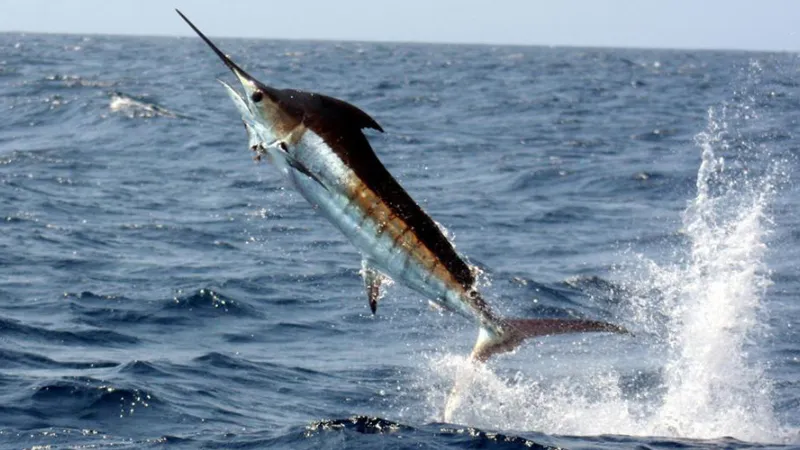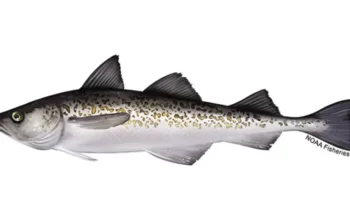Blue, black, white, and striped marlin are the four different varieties of marlin. The blue marlin is the largest, while the white is the smallest. You might wonder if you can eat marlin if you catch one.
Can you eat marlin, then? The answer is yes! Marlin meat is pink or red in color and has a firm texture. It’s a popular choice for sushi and sashimi, but it can also be cooked in a variety of ways.
Keep reading.
Table of Contents
What is Marlin?
All over the world, tropical and tepid waters are home to marlin, a species of swordfish. Some adults of this fish can reach lengths of more than 15 feet, so it’s a big fish.
Marlin are predators, feeding on smaller fish, squid, and crustaceans.
The blue marlin, which gets its name from the blueish-black hue of its body, is the most prevalent variety of marlin. Popular game fish like marlin are frequently caught for sport fishing.
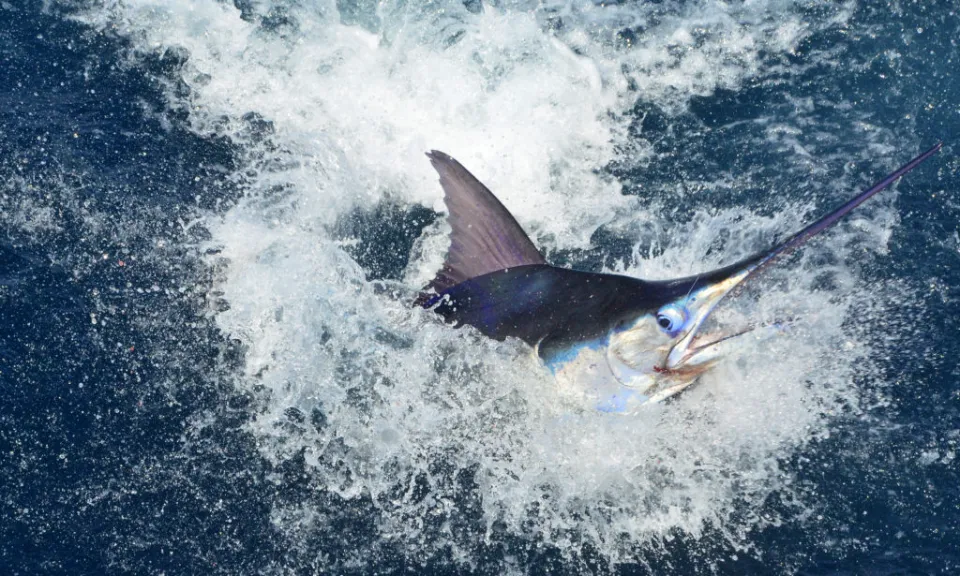
Is It Safe to Eat Blue Marlin?
Although blue marlin has many health advantages, you should exercise caution when consuming it.
Blue Marlin health and nutritional benefits:
- An excellent source of very lean and healthy protein is blue marlin.
- There are few saturated fats in blue marlin.
- Blue Marlin has low levels of sodium.
- Blue Marlin is rich in omega-3’s, vitamin B6, vitamin B12, and selenium.
- Magnesium and iodine are both abundant in blue marlin.
Blue Marlin pre-cautions:
The problem with Blue Marlin is that it is a large predatory species that tend to be loaded with much higher, unhealthy levels of mercury and other toxins than other fish that are harmful to humans.
One of the fish species with the highest levels of mercury are blue marlins.
Highly toxic mercury is very easily absorbed into the tissues of aquatic creatures, particularly fish. The older and larger a Blue Margin becomes. The higher the mercury levels in fish are.
Neurotoxins may cause serious health problems when we eat fish like Blue Marlin that have dangerously high mercury levels.
These harmful effects range from kidney damage, reproductive issues and birth defects. The brain of a developing fetus suffers harm from high mercury concentrations.
It is advised that young children and women of childbearing age avoid eating Blue Marlin and other fish with high mercury content because it can take the body months to eliminate the mercury.
Customers should therefore exercise caution when eating Blue Marlin.
What Does Marlin Taste Like?
The flavor of marlin flesh varies depending on the species, seasoning, and method of preparation. People anticipate it to have an exotic flavor due to its expensive price and aesthetically pleasing appearance.
But it tastes mild and has a texture that is almost like steak. It tastes somewhat stronger than tuna and has a flavor similar to swordfish.
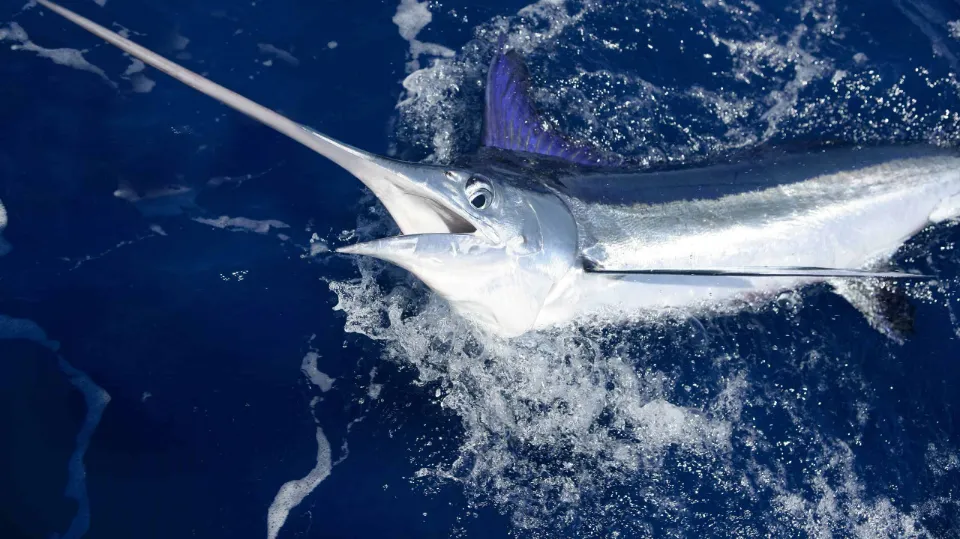
What Do You Do With a Marlin After You Catch It?
There are several choices. You can either mount it for display or release it back into the wild. If you decide to release it, there are a few things you need to do first.
Checking the fish’s health and for any injuries is your first priority. It is best to put it to sleep if it is hurt.
The next step is to take the hook out of the fish’s mouth. Take care not to harm the fish as you do this.
Finally, you need to release the fish back into the water. To prevent hurting the fish, be sure to handle this gently.
Best Ways to Prepare Marlin
You’ve come to the right place if you’re looking for the best methods of preparing marlin. If you’re looking for a healthy seafood option, marlin is a versatile fish that can be prepared in a number of different ways. Here are some of the best ways to prepare marlin:
– Marlin is a wonderful fish to grill. The fish only needs to be seasoned with salt, pepper, and lemon juice before being grilled for about four minutes on each side over medium-high heat.
– Baking is an excellent additional method for preparing marlin. When the fish is ready, season it as desired, and bake it for about 15 minutes in a 400°F preheated oven.
– Cooking by sauteing is the best option if you want to prepare marlin quickly and simply. Lemon juice, salt, and pepper are used to season the fish before it is sauteed for about three minutes on each side over medium-high heat.
No matter how you choose to prepare it, marlin is a delicious and healthy seafood option that is sure to please.
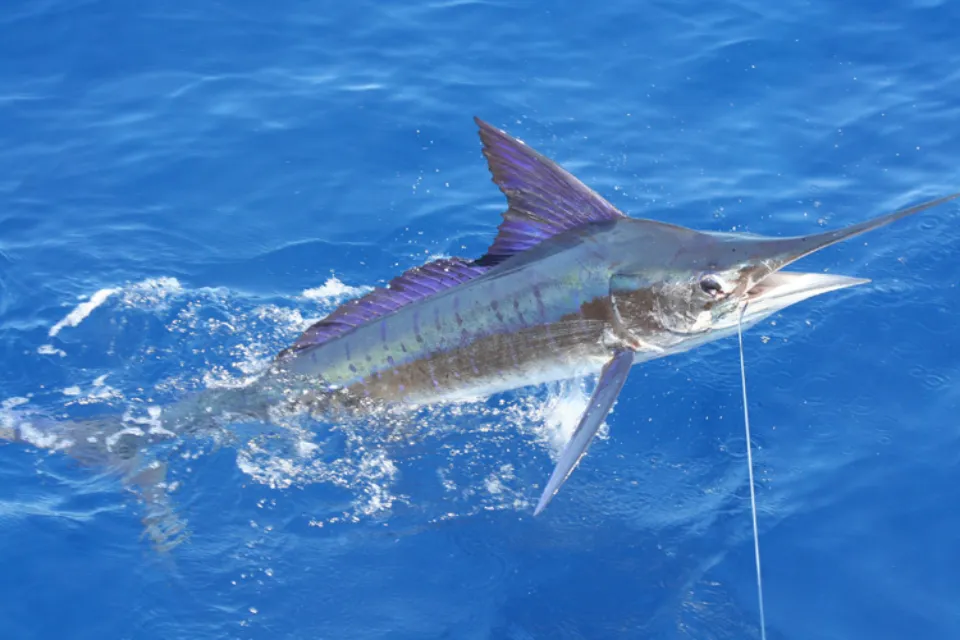
FAQs
Can You Eat White Marlin?
Yes, you can eat white marlin. In many parts of the world, it is actually regarded as a delicacy. The white marlin has firm, mild-flavored flesh that is white in color. It is often compared to swordfish or tuna. Typically, white marlin is baked, grilled, or smoked.
Can You Eat Marlin While Pregnant?
As mentioned above, marlin is a large fish and therefore contains high levels of mercury. If you’re pregnant or breastfeeding, it’s best to avoid eating marlin altogether.
To prevent foodborne illness, marlin must be cooked properly, just like all other seafood. When in doubt, speak with a registered dietitian or your healthcare provider.
Can You Eat Marlin Raw?
Yes, you can eat marlin raw. The fish is high in omega-three fatty acids, which are beneficial for your health. The fish, however, can also be quite hard and challenging to chew.
If you choose to eat marlin raw, make sure to slice it very thinly. To make the fish more tender, you could also cook it. Grilled, pan-fried, or baked marlin is delicious.
Summary: Can You Eat a Marlin?
My suggestion is to expand your cooking vision in another way, rather than stay away from bluefin. There are many more delicious and less endangered fish to prepare or taste in the restaurant.
Not to mention that Blue Marlin fish are known to contain high levels of mercury and other toxic substances that are dangerous to humans. Therefore, other species may also be much healthier!

